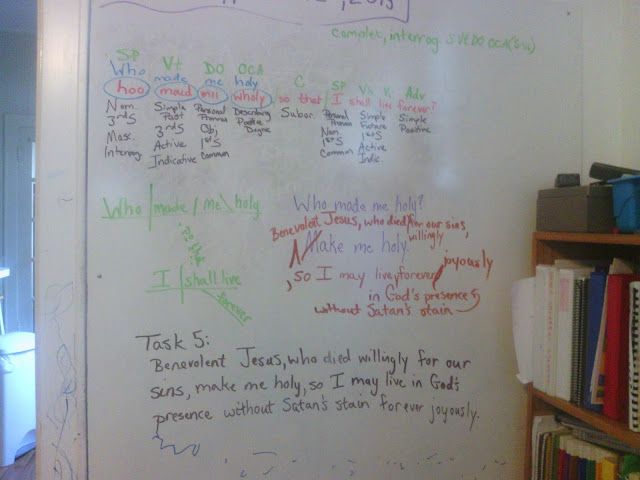Mortimer Adler states that to really study a book, you need to read it at least three times.
1st Reading: first impressions. Handshake of meeting with a new person in your life. Receive the book as the author intends, a work of art. Enjoy it. Savor it. But don't study it.
2nd Reading: study and analysis. We take note of characters as they enter the story, we mark and look up unfamiliar words and phrases that we glazed over during the first reading, and we look critically at the author's use of language. We keep a reading journal with a running list of characters along the left hand page and quick summaries, key events, and questions that occur to you while reading. Alternatively or in addition to a journal, have a set of sticky flags or sticky notes nearby while you read. Assign a sticky tag color to each aspect: characters, plot, questions, utter weirdness...whatever you wish to point out to yourself. Reading like this during your second acquaintance with a book will aide you in the classroom or in dialectic discussion of any sort...including participating in the Great Conversation.
3rd Reading: for the joy of it. Reminiscing with an old friend. It may be years in the future, when their own child is reading these classics, but your student will return to these books in the future again able to receive them as a work of art but with the studied eye of a well-read statesman.
The Cast of my Summer Prep, in order of appearance:
Little Britches by Ralph Moody
The Lion, the Witch, and the Wardrobe by C.S. Lewis
The Hiding Place by Corrie Ten Boom
A Gathering of Days by Joan Blos
Where the Red Fern Grows by Wilson Rawls
Crispin by Avi
The Phantom Tollbooth by Norton JusterAt this point, I'm down to Crispin! Yay!
"It's not right for a woman to read. Soon she starts getting ideas, and thinking... "











